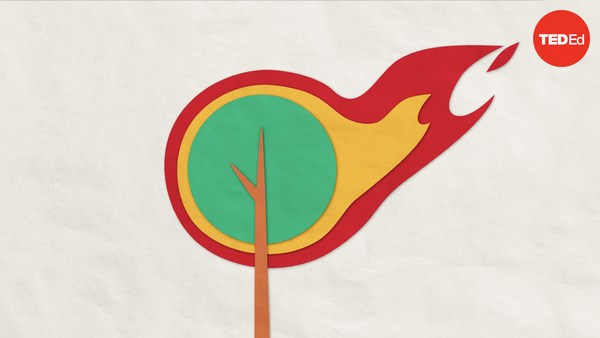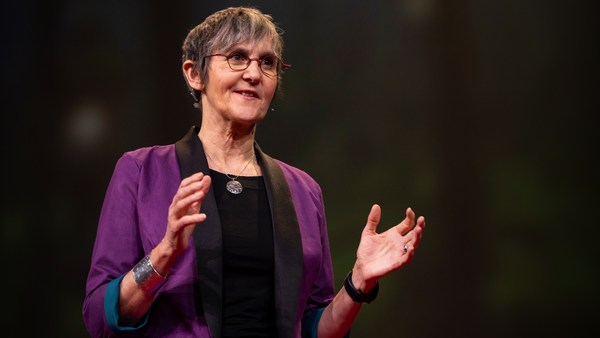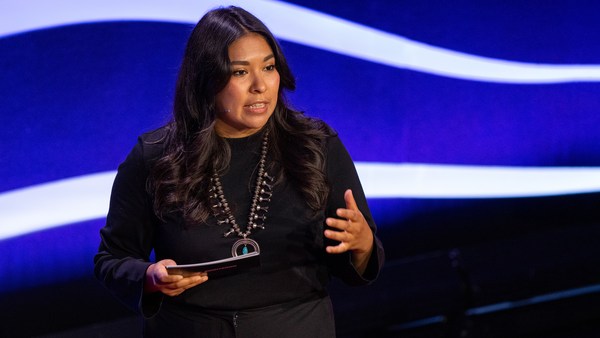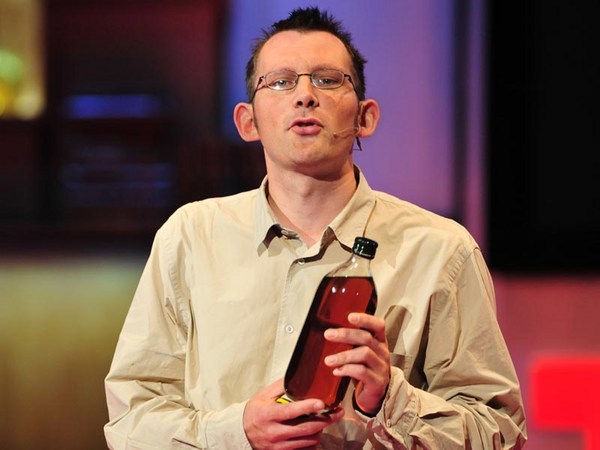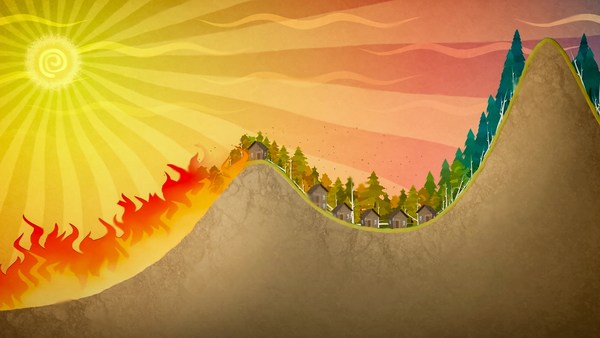My wife grew up in Santa Rosa, California, and her best friend was a woman named Joy Durand who lived on the northeast outskirts of town. At midnight on the evening of October 8, 2017, Joy's telephone rang. The voice said simply, "You must evacuate now. You don't have time to pack. Fire is coming." Joy gathered her parents and her six-year-old son, and they hurried outside. The wildfire, which at that point was just over the ridge from Joy's house, sounded like a jet engine going at full throttle. The family got in their car, drove away, and within minutes, their home had burned to the ground, incinerated by the blowtorch flames of the Tubbs Fire.
All night long, my wife got texts and messages from friends and family, and while we didn’t know the whole situation, it was clear that a disaster was unfolding in her hometown. No one thought that fire could penetrate so deeply into the city. But on that evening, 22 people lost their lives and over five thousand homes and structures were destroyed.
Wildfire is a large and growing challenge to the West and to the world. What happened in Santa Rosa is becoming all too common. Paradise in 2018, Australia in 2020, Europe in 2022. And fire experts say that we should get ready for more Santa Rosas because it's likely to get worse before it gets better.
Now beyond the major costs in lives and property and the economy, there's also a big carbon impact to wildfire. In fact, the additional carbon from California's 2020 wildfires was greater than the carbon that Californians had worked so hard to save over the previous two decades.
The largest fires are called megafires. These are the ones that burn over 100,000 acres with the intensity that can threaten aquifers and biodiversity, and even cause forest conversion, in which trees are so damaged that they just don't grow back. These fires are getting worse as well. In fact, eight of the ten largest megafires in California history have happened over just the last five years.
Many people feel overwhelmed by this situation. I know I did. So two years ago, working with great people, I closed a chapter of my life in aerospace and I started a new journey to see if I could understand the wildfire crisis better and what could be done about it. I started working with leaders from firefighting and philanthropy, entrepreneurship, science, tribal communities, and together we cofounded an organization called Megafire Action, whose sole purpose is to solve the megafire crisis.
And I've come to believe that if we take a holistic approach, we have an opportunity to establish a new relationship with fire, to work safely with fire and potentially to solve this wicked problem. The path forward has three solutions. The first is fire-adapted communities, the second is resilient landscapes and the third is innovative fire management.
So for the first, fire-adapted communities, what we need to do is to clear the brush and the vegetation from homes, from the immediate proximity of homes. Next, we need to use fire-resistant materials in the homes and the roofs. And then the third thing is to, where possible, protect against embers, flying embers, by protecting the home from openings like your air vents and your chimneys. Now communities have a strong shared interest to perform this work along the exterior boundary of the community because it reduces the chance that fire will penetrate deeply into the city, as it did in Santa Rosa.
The second solution is resilient landscapes. And if you take one lesson from this talk, it's this. In order to solve the megafire crisis, we need to bring our western landscapes back into a healthy balance by reducing the overgrown brush and trees in the wildlands and the forest. Here we're finally starting to take to heart the wisdom of the Indigenous peoples of the Americas who knew that fire was a natural part of the landscape and who introduced low-intensity fire, good fire, on a regular basis, at the right times. When this is done well, as around the communities of South Lake Tahoe, then it can actually divert a megafire as bad as the one that they experienced in 2021. It can also potentially prevent a megafire from occurring, which is what some people think happened in Napa of last year.
But the scale of this challenge is huge. There are hundreds of millions of acres of wildland in the American forests. The Forest Service hopes to reduce the risk on 50 million high-priority acres over the next ten years. But the challenge is that they're only accomplishing a few million acres a year. And so we're not at the pace or scale that we need to do to address this challenge. So what do we need to do?
Well, the first thing that we need to do is to essentially hire, train and retain many more workers who will be doing the hard work of defusing the time bombs inside our western forests. We need to pay them well. We need to support them with full-time work and we need to protect them from liability where necessary.
The next thing we need to do is to empower them with innovation. And right now there are an incredible number of great companies and organizations that are working to bring this innovation to reality. Just one of these companies is called BurnBot, and what they're hoping to do is to make controlled burns safer and faster. They're going to establish a burned perimeter around an area with the remotely piloted rover and then they can bring a drone into the middle of it, drop some fire into it and burn that interior area safely. It's a brilliant but a simple idea. And I think we're going to need a lot more of this kind of innovation if we're going to scale up to the to the size of the problem that we have before us.
Now the first two solutions that I've talked to you about are pretty well agreed. The third one, innovative fire management, is somewhat more controversial, but I think it offers huge potential to address and solve the wildfire problem. What we need is innovation and technology that can rapidly detect and assess fire and then quickly put it out when it gets bad. And here, speed is paramount, because when you're in the worst kind of fire days -- these are the hottest, driest and windiest fire days -- if you can't bring fire management resources to a fire very quickly, then it is likely that you won't be able to contain that fire.
Here we need to look at the example of the Quick Reaction Force of Southern California, which is really designed in some ways for these toughest days. The QRF is a public-private partnership, which now has three Chinook helicopters. These are the big ones with the two rotors on the top. And each of them can drop up to 3000 gallons of water on a fire, day or night, and they can do it very precisely. They can also refill up to six times an hour so they can bring a lot of mass to the problem. Over the course of two years of demonstrations, the QRF has demonstrated that this model has great potential, that, in fact, if you can bring a lot of fire management resource to a fire very quickly, you can get on top of fires before they get big and unmanageable. And this opens up an exciting potential future.
Imagine this model with a series of larger drone vehicles distributed across the landscape in higher-fire-risk areas. Imagine these vehicles positioned periodically along utility lines or in areas of higher fire-risk deep in the forest. Such a distributed network, if connected to the right sensor system, could offer a future in which we are able to really put out fires on the worst fire days, and even in remote communities. Companies like Rain and Joby Aviation are working on this vision today.
The sensor system will also be very important for the resolution of this problem. The system -- which will entail both ground-based, aerial and space-based platforms -- won't be important just because we're going to be able to see and detect fire where and when it pops up, but also because it'll enable us to differentiate between good and bad fire, low-intensity fire and high-intensity fire, which is very important because we need more lower-intensity fire on the landscape to rejuvenate our forests, just as much as we need to know where and when fire risk is becoming higher intensity.
Fire is a prism through which we can see the future of humanity's relationship with natural systems. Working together and supported by technology, we can build a world in which communities are resilient to wildfire and in which forests are brought back into a healthy balance. Ultimately, we can build a future, in which we don't just manage fire to protect human life and property, but also to protect the biosphere for global carbon emissions and for biodiversity. Ultimately, we need to become the crew of Spaceship Earth. So let's get to work. Let's learn from fire and let's build a resilient, sustainable future.
Thank you.
(Applause)
